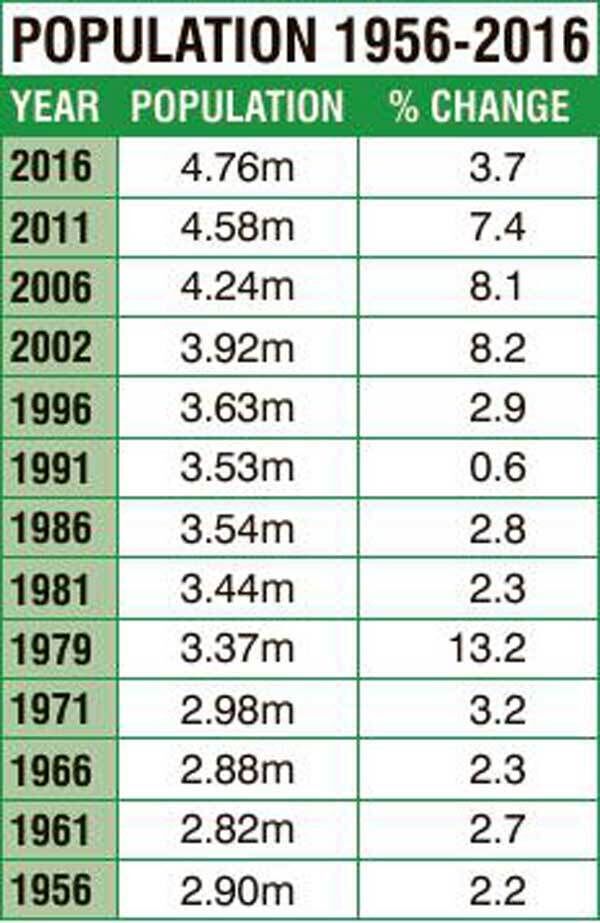Census 2016 shows increase in deserted villages in rural Ireland

The census results are out, and it is clear from the data presented that population decline continues in many rural areas, particularly those far distant from cities.
This pattern has continued for a very long period and, in part, it reflects changing priorities in a changing society, where citizens prefer urban living modes, and the contribution of agriculture and fishing to the economy is declining.
However, to what extent is the decline, in part at least, a product of government policies?
Many of the services traditionally available in rural areas (gardaí, post office, banking) have been cut.
The more the population declines, the greater the cost of these services, and the greater the likelihood of further cuts, adding to the problem.
An additional service necessary for life in the modern world is broadband. Many isolated rural areas lack this service.
Its provision was a major priority in the Commission for the Economic Development of Rural Areas (Cedra) report, published two years ago.
Without adequate broadband, employment could not be provided in rural areas, thus forcing migration or emigration.
Are the balladeer’s words coming true:
“There’ll be no one living now between the schoolhouse and the mountain.
On the hill John Murphy ploughed, so many trees you could not count them.”

Population change at sub-county level
The pattern of population change is not uniform within counties. In general, urban areas and areas close to cities have shown greater increases in population than distant rural areas.
In Cork city, the population grew by 5.4% in the last five years, compared with 4.7% for the total city and county area.
Areas which showed above average growth in population included Kinsale (up 9.8%), Ballinadee electoral district (up 8.8%); Innishannon electoral district (up 9.8%); Kilbrogan electoral district (up 19.2%); Murragh (up 12.9%), and Templemartin (up 8.4%).
By contrast, the population fell in the Bantry rural district.
Areas which showed a significant fall in population in the five-year period included Kilcaskan electoral district (down 8.2%); Sheeps Head electoral district (down 9.2%); Beara electoral district (down 22.7%); and Kilnamanagh (down 12.7%) in the Castletown rural district.
Each of these areas is on the Beara or Sheeps Head peninsulas.
In the Schull rural district, there was a large fall in population in the Ballybane electoral district (down 11.9%); Dunbeacon (down 12.6%); and Goleen (down 10.9%).
Two other electoral districts, Milane in the Dunmanway Rural District, and Streamhill in the Mallow Rural District also showed large falls of 20.1% and 23.6%.
By contrast, Courtmacsherry and Timoleague, in the Clonakilty rural district, showed population rises of 12.2% and 9.3%.
Other rural electoral district showing large increases in population included Killeagh in east Cork (17.3%); Ballycotton (up 14.7%); Caherduggan (up 14.4%), and Nohoval (up 13.5%).
Similar patterns can be seen in Kerry and Tipperary. The population of Kerry grew slowly over the last five years.
Nine out of 21 electoral districts in the Cahersiveen rural district showed a decline in population, including the district of the town itself, which lost 9.3% of its population in five years.
In the Dingle rural district, eight out of 18 electoral districts showed a fall. In the Kenmare rural area, it was eight out of 16, though Sneem increased its population by an amazing 41.1%.
The population in Tipperary also grew slowly. There are much fewer examples than in Cork of large increases or decreases in population.
Among the areas where population grew at above average rates, were Nenagh (up 8.2%); Cloughjordan (up 8.3%); Killoscully electoral district (up 9.6%);Newport (up 8.3%); Twomileborris (up 8.3%); Carrick-on-Suir (up 13.2%); Cashel Rural (up 11.3%); Cloneen electoral district (up 11.3%); Derrygrath electoral district (up 8.3%); Newcastle electoral district (up 8.4%); and Ballyphillip (up 8.2%).
Areas in Tipperary which showed decreases of over 8% in the five years included Shronell electoral district (down 8.2%); Emly electoral district (down 9.1%); Anner electoral district (down 10.8%); Kilpatrick electoral district (down 8.9%); Ardmayle electoral district (down 9%); Upperchurch electoral district (down 10%); Templederry electoral district (down 15.6%); Dolla electoral district (down 9.4%); Graigue electoral district (down 10.7%); and Aglish-Cloghane electoral district (down 11%).
Three of these districts are clustered together between Nenagh and Thurles but, there is no pattern comparable to the isolation of areas of population decline in West Cork and Kerry.
Still, Ireland has a significantly higher proportion of its population in rural areas (42%) than the EU as a whole (27%) and particularly Britain (12%).
The census shows that population in the 26 counties rose by 170,000, to reach 4,758,000 in 2016.









